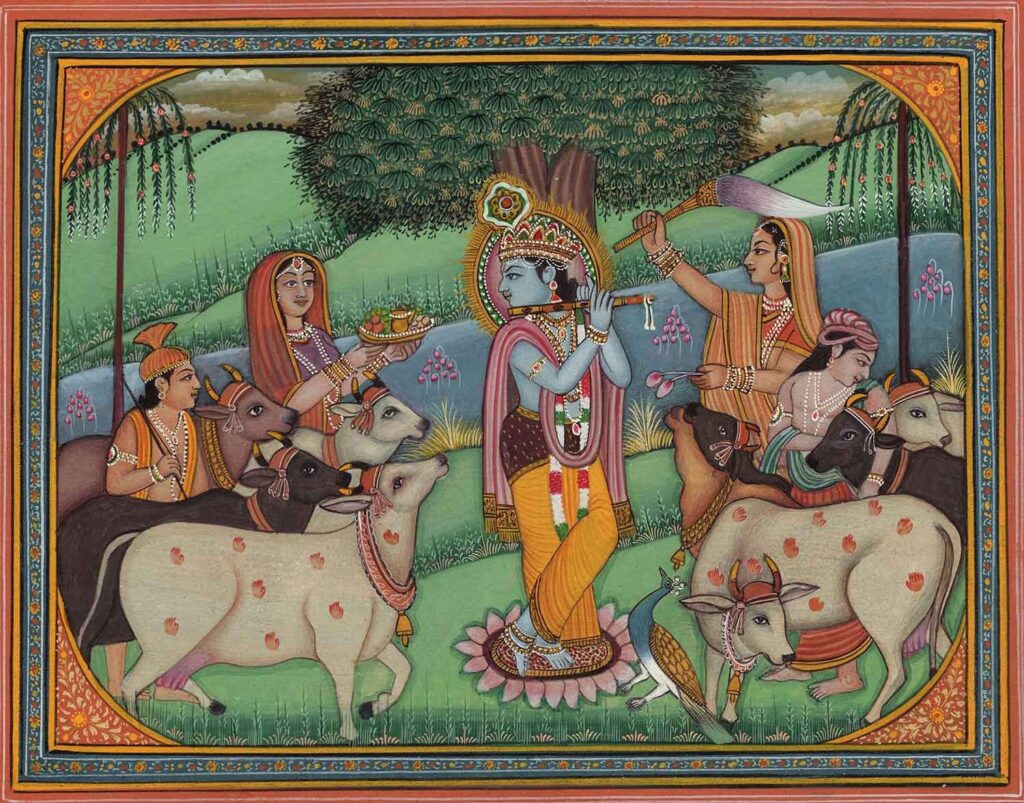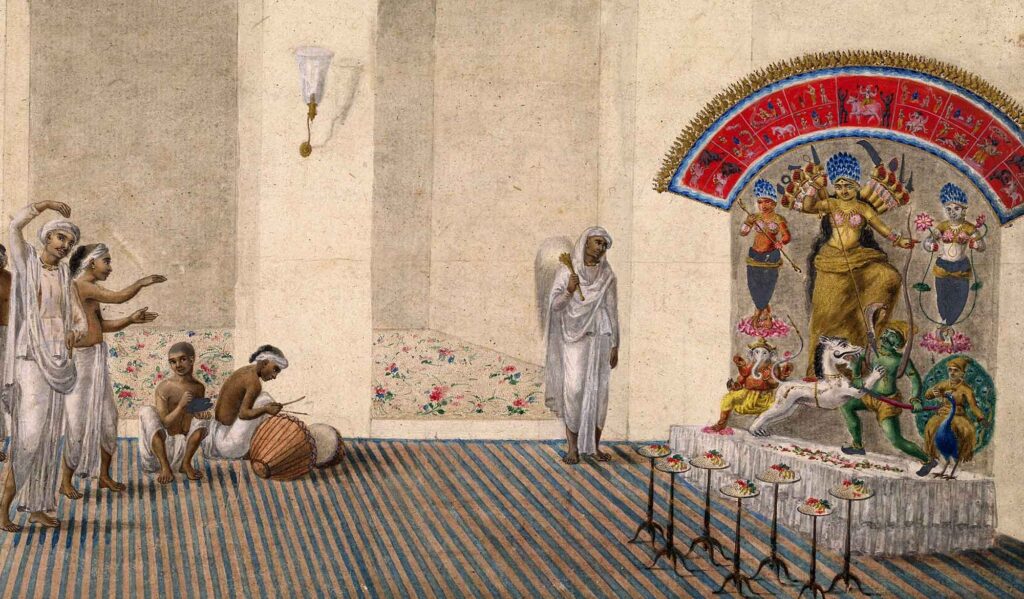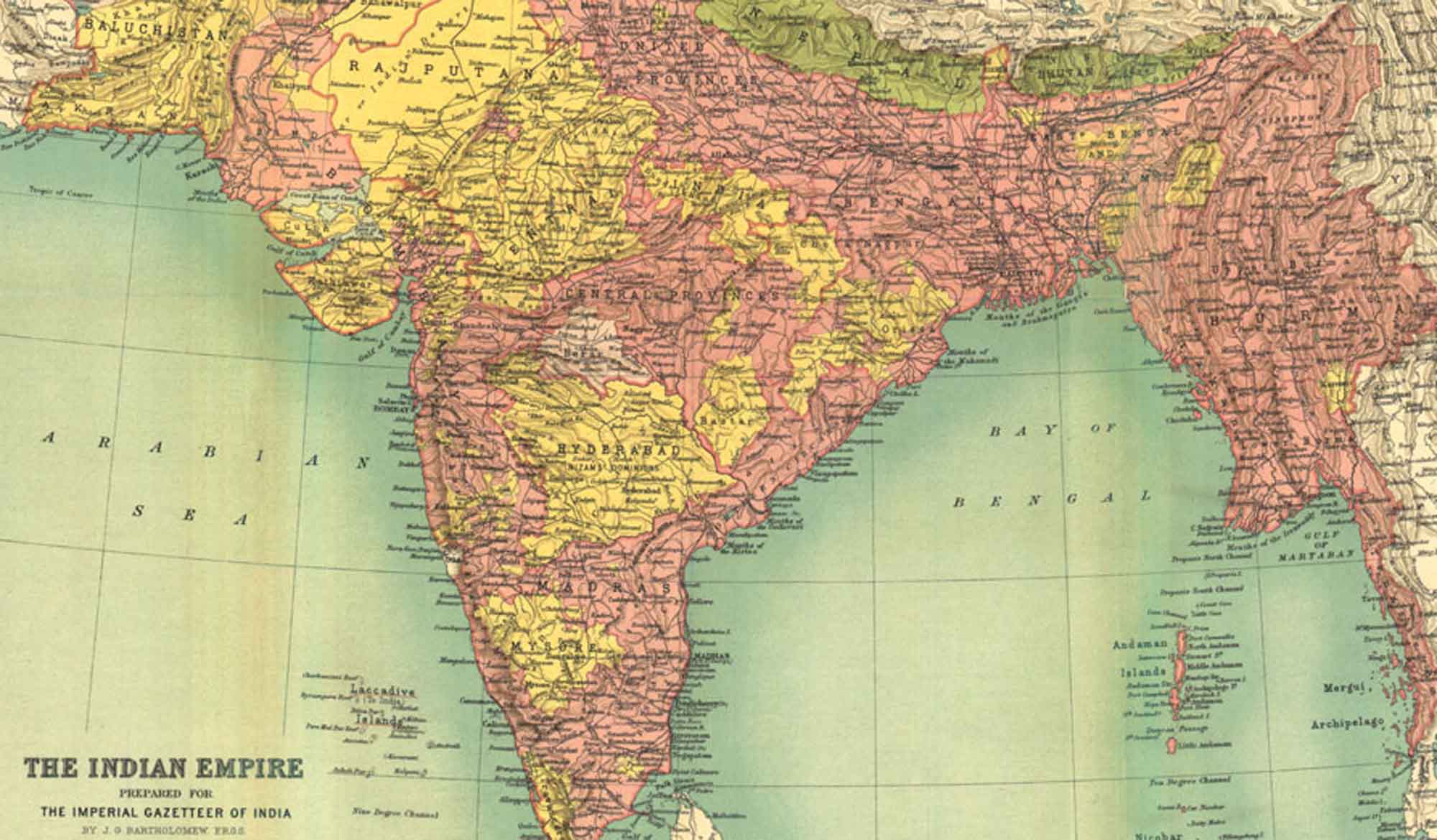Overview
In this article "Śrī Gaurāṅga Samāja (The Society of Śrī Gaurāṅga)" from the 10th volume of Sajjana Toṣaṇī, Bhaktivinoda Ṭhākura deliberates upon what is the actual society of Śrī Gaurāṅga and explains the true meaning of iṣṭa-goṣṭhi according to Śrī Caitanya-caritāmṛta.
- Only Those Who Have Faith in Śrī Gaurāṅga Mahāprabhu are Part of His Society
It is Necessary to Include in the Society of Śrī Gaurāṅga the Three Types of People Who Have Faith in Him- The Members Summoned to the Society of Śrī Gaurāṅga, and the Grand Assembly of Prakāśānanda Sarasvatī of Kāśī
- The Founding of the Society of Śrī Gaurāṅga and its Success in Preaching
- Only Vaiṣṇavas in the Topmost Class Do Not Belong to Any Society
- The duty of an intermediate Vaisnava in Śrī Gaurāṅga Samāja
- ‘Iṣṭa-goṣṭhī’ and ‘Vaiṣṇava society’ Are Other Ways of Referring to Śrī Gaurāṅga Samāja
- Iṣṭa-goṣṭhī also means Kṛṣṇa-kathā-goṣṭhī
- Śrī Gaurāṅga Samāja is universal
- The Founding of Śrī Gaurāṅga Samāja in Kalikata and an Instruction for the Society’s Leaders
- Delineating the Behaviour of the Members of the Vaiṣṇava Society
- Caution to Preachers Regarding Their Qualification
- The Genuine Society of Gaurāṅga is the Society that Includes From its Inception Viśuddha-Vaiṣṇavas, or Devotees on the Transcendental Platform
- Progress in Bhajana is Not Possible Without the Association of an Elevated Vaiṣṇava
- The Preachers of Bhakti-dharma Always Reject the Policy of Conciliation, Which is Opposed to the Teachings of Śrī Gaurāṅga
- An Instruction of Benevolence to Śrī Gaurāṅga Samāja: Travel and Spread the Teachings of Śrī Gaurāṅga
(translated by Gaudiya Vedanta Publications)
Only Those Who Have Faith in Śrī Gaurāṅga Mahāprabhu are Part of His Society
After thorough deliberation we have concluded that mankind will greatly benefit through Śrī Gaurāṅga Samāja, the society of Śrī Gaurāṅga. Śrīla Vṛndāvana Dāsa Ṭhākura has said, ye vā mane, ye nā mane, saba tāṅra dāsa – Everyone is a servant of Śrī Caitanya, even if some accept Him as Bhagavān and others do not.” Indeed, every Gauḍīya Vaiṣṇava accepts that Śrī Gaurāṅga Mahāprabhu is Śrī Kṛṣṇa Himself, the Absolute Truth.
Constitutionally, every living being is a servant of Śrī Kṛṣṇa. However, many do not accept this because they are afflicted by offences. Such people will certainly neglect this Śrī Gaurāṅga Samāja, so what will the society do but remain indifferent to them? Those who hold Śrī Gaurāṅga Mahāprabhu in high regard will participate in this society with one-pointed focus. What doubt can there be in this?
Three types of people have faith in Śrī Gaurāṅga Mahāprabhu: (1) those who have faith that He is the Supreme Lord, (2) those who have faith that He is the topmost devotee, and (3) those who categorize Him as a great personality. However, as all three types respect Śrī Gaurāṅga Mahāprabhu, they can be included within His society.
It is Necessary to Include in the Society of Śrī Gaurāṅga the Three Types of People Who Have Faith in Him
Those who perform bhajana of Śrī Gaurāṅga Mahāprabhu, knowing Him to be the Supreme Lord, are His one-pointed devotees who are counted among His intimate associates. This category is further divided because even though some people know Śrī Gaurāṅga to be the Supreme Lord, they may not consider Him the object of their bhajana. Nonetheless, there is no doubt that everyone in this particular category demonstrates love for Śrī Gaurāṅga.
Those who consider Śrī Gaurāṅga to be the topmost devotee will certainly propagate love for Śrī Gaurāṅga Mahāprabhu (gaura-prema) from time to time, even if they belong to another sampradāya. Persons in this category can never become disinclined to the promotion of Śrī Gaurāṅga Samāja.
And those who consider Śrī Gaurāṅga Mahāprabhu to be an ordinary devotee and a native social reformer also belong to His community. If the second and third categories are not included in the society of Śrī Gaurāṅga, then this society cannot be said to benefit the public at large. Taking care to bring them within the community of Śrī Gaurāṅga is thus an intelligent act.
Accordingly, the conclusion is that the society of Śrī Gaurāṅga comprises those great souls who hold Śrī Gaurāṅga as an ideal.
The Members Summoned to the Society of Śrī Gaurāṅga, and the Grand Assembly of Prakāśānanda Sarasvatī of Kāśī
One question must be considered here: Does Śrī Gaurāṅga approve of such a society or not? If we examine the śāstras pertaining to bhakti we will observe that Śrī Gaurāṅga personally established the foundation of such a society during His prakṛta-līlā, or manifest presence.
O reader, do you remember that in the holy place of Vārāṇasī a grand assembly was held in honour of Śrī Gaurāṅga Mahāprabhu? It was organized by the brāhmaṇa from Mahārāṣṭra, who was an exceptional devotee and an associate of Mahāprabhu. He invited all the Śaṅkarite sannyāsīs and other paramahaṁsas of Kasi and specifically requested Śrīman Mahāprabhu to join that assembly so that Mahāprabhu would bestow His mercy upon them all, as well as manifest some of His opulence. Astonished upon beholding Śrīman Mahāprabhu’s grandeur, those sannyāsīs rose from their seats and offered Him – the Lord of our hearts – the most elevated sitting place.
In that assembly Śrīman Mahāprabhu preached śuddha-svabhakti, or pure devotional service to Himself, and thus became worshipful by all of those present there. The sannyāsīs, their eyes brimming with tears, took shelter of His lotus feet. All varieties of people participated in that grand assembly, which was made more glorious by the presence of paramahaṁsa sannyāsīs, a multitude of brāhmaṇas who were engaged in fruitive activities, countless worldly minded people, devotees from every sampradāya, and the most elevated pure devotees such as Śrī Sanātana Gosvāmī, Śrī Candraśekhara Ācārya, Śrī Tapana Miśra and Śrī Paramānanda Kīrtanīya. This is described in Śrī Caitanya-caritāmṛta:
āra dine gela prabhu se vipra-bhavane
dekhilena, vasiyāchena sannyāsīra gaṇe
“The next day Śrī Caitanya Mahāprabhu went to that brāhmaṇa’s residence and saw the sannyāsīs of Vārāṇasī sitting there.” (Śrī Caitanya-caritāmṛta, Ādi-līlā 7.58)
vasiyā karilā kichu aiśvarya prakāśa
mahātejomaya vapu koṭi-sūryābhāsa
“Sitting on the ground, Śrī Caitanya Mahāprabhu revealed His mystic power by manifesting extremely effulgent bodily lustre as bright as millions of suns.” (Śrī Caitanya-caritāmṛta, Ādi-līlā 7.60)
prabhāve ākarṣila saba sannyāsīra mana
uṭhila sannyāsī saba chāḍiyā āsana
“Śrī Caitanya Mahāprabhu’s brilliant bodily effulgence attracted the minds of the sannyāsīs, and they respectfully rose, giving up their sitting places.” (Śrī Caitanya-caritāmṛta, Ādi-līlā 7.61)
āpane prakāśānanda hātete dhariyā
vasāilā sabhā-madhye sammāna kariyā
“Prakāśānanda Sarasvatī, however, personally caught Śrī Caitanya Mahāprabhu by the hand and with much honour seated Him in the midst of the assembly.” (Śrī Caitanya-caritāmṛta, Ādi-līlā 7.65)
prabhura miṣṭa-vākya śuni’ sannyāsīra gaṇa
citta phiri’ gela, kahe madhura vacana
“After hearing the sweet words of Śrī Caitanya Mahāprabhu, the minds of the māyāvādī sannyāsīs were moved, and thus they spoke pleasing words. (Śrī Caitanya-caritāmṛta, Ādi-līlā 7.99)
ye kichu kahile tumi, saba satya haya
kṛṣṇa-prema sei pāya, yāra bhāgyodaya
“Dear Śrī Caitanya Mahaprabhu, all You have said is completely true. Only one whose good fortune has awakened attains kṛṣṇa-prema.” (Śrī Caitanya-caritāmṛta, Ādi-līlā 7.100)
The Founding of the Society of Śrī Gaurāṅga and its Success in Preaching
By reading this narration, we can certainly understand that the original Śrī Gaurāṅga Samāja in the house of the brāhmaṇa from Mahārāṣṭra was manifested by the desire of Śrī Gaurāṅga Mahāprabhu. If He bestows His mercy upon us, the present society of Śrī Gaurāṅga will achieve similar success. If those who honour Śrī Gaurāṅga constantly cultivate an understanding of His glories they will become supremely pure Vaiṣṇavas within no time. Moreover, even if those who do not honour Him at all attend the society’s assemblies and thereby regularly hear sweet narrations about Him, they will also become gentle at heart. Moreover, they will eventually relinquish the impurity of their adherence to other sampradāyas and become wholly pure bhaktas of Gaurāṅga. As Śrīla Kavirāja Gosvāmī says in Śrī Caitanya-caritāmṭta (Madhya-līlā2.87):
yebā nāhi bujhe keha, śunite śunite seha,
ki adbhuta caitanya-carita
kṛṣṇe upajibe prīti, jānibe rasera rīti,
śunilei baḍa haya hita
“If one does not understand Śrī Caitanya Mahāprabhu’s wonderful life and pastimes but nonetheless continues to hear about them again and again, love for Kṛṣṇa will be aroused. Gradually one will come to understand the tradition of rasa, the loving affairs between Kṛṣṇa and the gopīs and other associates of Vṛndāvana. Thus, simply hearing about Śrī Caitanya Mahāprabhu awards the highest benefit”.
Only Vaiṣṇavas in the Topmost Class Do Not Belong to Any Society
According to the scriptures, there are three categories of Vaiṣṇavas: uttama, madhyama and kaniṣṭha. Among them, the uttama-vaiṣṇava, or topmost devotee, does not belong to any society. Nonetheless, his merciful presence in Śrī Gaurāṅga Samāja will bring it much benefit. He inherently sees all beings in relation to Bhagavān and therefore he does not differentiate between what belongs to him and what belongs to someone else. Because he sees every living entity as situated within the Supreme Absolute Truth, He does not distinguish between friend and enemy, or devotee and non-devotee.
Śrī Haridāsa Ṭhākura, the topmost Vaiṣṇava, possesses all these bhavas, or moods. Nonetheless, he has particular affection for the bhakta-goṣṭhī, the community of bhaktas, and He is devoted to the preaching of bhakti. As stated by Śrīla Sanātana Gosvāmī in Śrī Caitanya-caritāmṛta (Antya-līḷā 4.100?):
avatara-karya prabhura – nama-pracare
sei nija-karya prabhu karena tomara dvare
“Śrī Caitanya Mahāprabhu descended with the mission to propagate the importance of chanting the holy name. Now He is accomplishing His own mission through you (Śrī Haridāsa Ṭhākura).”
pratyaha kara tina-lakṣa nāma-saṅkīrtana
sabāra āge kara nāmera mahimā kathana
“Daily you are chanting 300,000 holy names and speaking the glories of the holy name before all.”
āpane ācare keha, nā kare pracāra
pracāra karena keha, nā karena ācāra
“Some persons behave properly but do not preach the glories of chanting śrī nāma, whereas others preach but do not behave according to the principles.”
‘ācāra’, ‘pracāra’, – nāmera karaha ‘dui’ kārya
tumi – sarva-guru, tumi jagatera ārya
“In relation to the holy name you both behave in an exemplary way (ācāra) and preach to others (pracāra). You are the guru of all, for you are the topmost devotee in this world.”
The duty of an intermediate Vaisnava in Śrī Gaurāṅga Samāja
The Vaiṣṇavas on the madhyama, or intermediate, level remain under the guidance of uttama-vaiṣṇavas, and are the benefactors of kaniṣṭha-vaiṣṇavas, neophyte devotees. Therefore, uttama and madhyama–bhaktas are qualified for the bhajana section of Śrī Gaurāṅga Samāja. Although they may occasionally participate in the activities of the working section, they do not manifest their competence in such work like the kaniṣṭha devotees, who are fond of it. However, with the assistance of the kaniṣṭha–vaiṣṇavas they accomplish whatever work needs to be done.
Vaiṣṇavas in the bhajana section of Śrī Gaurāṅga’s society commonly take pleasure in nirjana-bhajana, or solitary absorption in the holy name, and in iṣṭa-goṣṭhī (a gathering of like-minded devotees in which they discuss their iṣṭa, worshipful Lord, and thus attain much satisfaction and pleasure). There are two types of iṣṭa-goṣṭhī: personal practice (acara) and missionary work (pracāra). To maintain their practices, such Vaiṣṇavas remain engaged in reciting and hearing scriptures like Śrīmad-Bhāgavatam, and in performing hari-nāma–kīrtana. At the time of preaching, they impart knowledge of bhāgavata-tattva, jīva-tattva, rasa-tattva and the glories of the holy name of Śrī Hari, according to the qualification of the listener.
‘Iṣṭa-goṣṭhī’ and ‘Vaiṣṇava society’ Are Other Ways of Referring to Śrī Gaurāṅga Samāja
The general society of Gaurāṅga was founded during the Lord’s manifest pastimes in Varanasi, and the iṣṭa-goṣṭhī process was also established at that time. Vaiṣṇavas participated in some form of iṣṭa-goṣṭhī even before the advent of Śrī Gaurāṅga. At Mahāprabhu’s time also those iṣṭa-goṣṭhīs were known as the “Assembly of Gaurāṅga” or the “Vaiṣṇava assembly”. Once, while in an iṣṭa-goṣṭhī with all His associates at Siddha-bakula (in Purī-dhāma), Mahāprabhu spoke to Śrī Rūpa Gosvāmī:
prabhu kahe, – “kaha, kene kara saṅkoca-lāje?
granthera phala śunāibā vaiṣṇava-samāje?”
“Mahāprabhu encouraged Rūpa Gosvāmī, saying, ‘Why are you hesitating out of shyness? You should recite the good fruit of your writing to the Vaiṣṇava assembly.’” (Śrī Caitanya-caritāmṛta, Antya-līlā 1.130)
Iṣṭa-goṣṭhī also means Kṛṣṇa-kathā-goṣṭhī
Without the association of śuddha-bhaktas, or pure devotees, there is no question of holding an iṣṭa-goṣṭhī. The word iṣṭa means “desired subject”, and goṣṭhī means “assembly”. These two words combine to form the term iṣṭa-goṣṭhī, which refers to an assembly of sādhus who are devoted to śuddha-bhakti, or the practice of pure devotion. Śuddha-bhaktas are rare in this world, and therefore only a few śuddha-bhaktas can be found in any single iṣṭa-goṣṭhī. Even a gathering of just three Vaiṣṇavas constitutes an iṣṭa-goṣṭhī. This is described in Śrī Caitanya-caritāmṛta (Antya-līlā 4.52):
prabhu āsi’ prati-dina milena dui-jane
iṣṭa-goṣṭhī, kṛṣṇa-kathā kahe kata-kṣaṇe
“Every day Śrī Caitanya Mahāprabhu would come to meet them both (Śrī Svarūpa Dāmodara and Śrī Rāya Rāmānanda) and in their iṣṭa-goṣṭhī they would discuss kṛṣṇa-kathā for some time.”
A meeting of only two Vaiṣṇavas is called a kṛṣṇa-kathā-goṣṭhī. This is stated in Śrī Caitanya-caritāmṛta (Antya-līlā 4.136):
dui-jana vasi’ kṛṣṇa-kathā-goṣṭhī kailā
paṇḍitere sanātana duḥkha nivedilā
When Jagadānanda Paṇḍita and Sanātana Gosvāmī sat together for a kṛṣṇa-kathā-goṣṭhī to discuss Kṛṣṇa’s pastimes, Sanātana Gosvāmī submitted to Jagadānanda Paṇḍita the cause of his sorrow.
Śrī Gaurāṅga Samāja is universal
The purport is that when all types of people congregate in assemblies organized by devotees or faithful people, a general assembly of Gaurāṅga is formed. A congregation consisting solely of devotees is called a Vaiṣṇava assembly, or an iṣṭa-goṣṭhī of Vaiṣṇavas. When two śuddha-bhaktas meet, a kṛṣṇa-kathā-goṣṭhī takes place. And when a single śuddha-bhakta resides somewhere to exclusively chant the holy name, it is a place of nirjana-bhajana, or solitary devotional practice. The people in all these categories are included in Gaurāṅga’s society. It can therefore be concluded that the purpose of Śrī Gaurāṅga’s congregation is to cultivate activities related to the eternal, constitutional occupation of the living entity (jaiva-dharma) throughout the universe.
The Founding of Śrī Gaurāṅga Samāja in Kalikata and an Instruction for the Society’s Leaders
By the inspiration of Śrī Gaurāṅga Mahāprabhu, Śrī Gaurāṅga Samāja has been established in the vast city of Kalikata (Kolkata). This is a matter of extreme good fortune for the public. Now it is the responsibility of every noble-hearted, genuine seeker of the Truth to work on promoting and preserving it. This society will not remain undisturbed unless its members vigilantly avoid selfishness, hypocrisy and the desire for honour and prestige.
In the land of Bengal, these three faults pollute whatever grand mission is inaugurated, and consequently that mission is eventually ruined. With folded hands we humbly beg the big-hearted leaders of this society to remain ever conscious of this. If the members of this society can follow all the ancient rules and regulations of sat-dharma, or true religion, while remaining unaffected by the three improprieties mentioned above, the society will flourish. Unity alone is the life of any community. The introduction of a new opinion or the divergence of opinion will destroy the unity of its members and eventually ruin the very life of the society. We, however, will perform kirtana of Gaurāṅga Mahāprabhu’s glories and never be envious of the opinions and activities of the other sampradāyas. The most venerable Haridāsa Ṭhākura has said:
śuna, bāpa, sabārai ekai īśvara
nāma-mātra bheda kare hinduye yavane
paramarthe ‘eka’ kahe korāṇe purāṇe
eka śudha nitya-vastu akhaṇḍa avyaya
paripūrṇa haiya vaise sabāra hṛdaya
se prabhura nāma-guṇa sakala jagate
balena sakale mātra nija-śāstra mate
ye īśvara, se punaḥ sabāra bhāva laya
hiṁsā karilei se, tāhāna hiṁsā haya
Śrī Caitanya-bhāgavata (Ādi-khaṇḍa 16.76–78, 80–81)
“Dear father, the Supreme Lord is one for all living entities. The difference between the Muslim God and the Hindu God is in name only. All scriptures, whether the Koran or the Purāṇas, state that there is only one Supreme Lord. He is the non-dual, eternal, transcendental Absolute Truth, infallible and perfectly complete, and in that capacity He resides in everyone’s heart. The Supreme Lord’s transcendental name and qualities are glorified throughout the world by various scriptures. The Lord accepts each individual’s mood of surrender. When you are violent to others, you are being violent to the Lord Himself.”
khaṇḍa khaṇḍa hai’ deha yāya yadi prāṇa
tabu āmi vadane nā chāḍi hari-nāma
“My body may be cut into pieces or I may lose my life, but I will never abandon uttering the holy name.” (Śrī Caitanya-bhāgavata, Ādi-khaṇḍa 16.94)
Delineating the Behaviour of the Members of the Vaiṣṇava Society
The society of Gaurāṅga is certain to develop if its noble-hearted members adhere to the above guidelines. It is essential that they follow certain time-tested principles. In the general meetings of Śrī Gaurāṅga Samāja, recitations, explanations, scriptural discourses and nāma-saṅkīrtana can be performed, but it will be offensive to hold discourses imbued with rasa or to sing rasa-kīrtana in such assemblies. This can take place only in an iṣṭa-goṣṭhī. It is essential to observe certain principles, as witnessed in the character of Mahāprabhu:
dine nṛtya-kīrtana, īśvara-daraśana
rātrye rāya-svarūpa-sane rasa-āsvādana
“During the day, Śrī Caitanya Mahāprabhu performed nṛtya-kīrtana, dancing and chanting, and He also took darśana of Lord Jagannātha. At night, along with Rāya Rāmānanda and Svarūpa Dāmodara Gosvāmī, He tasted the nectar of rasa. (Śrī Caitanya-caritāmṛta, Antya-līlā 11.12)
This implies that there is no pleasure in discussing rasa in the association of general people, and that such discussions will substantially impede one from relishing rasa. This hindrance does not appear in an iṣṭa-goṣṭhī.
It is necessary to preserve the etiquette of kīrtana when nāma-kīrtana is performed. In this regard it is also necessary to decide what is most effective. If the members of the Vaiṣṇava society themselves perform kīrtana, that kīrtana will bear the most fruit. Listening to the kīrtana of hired musicians who perform for remuneration is both offensive and fruitless.
Caution to Preachers Regarding Their Qualification
It is vital that Śrī Gaurāṅga Samāja exercises great care in its preaching. Discourses and instructions should be strictly in accordance with the teachings Śrī Gauracandra, bestowed upon the jīvas of Kali-yuga out of His boundless compassion.
The responsibility to preach is best given to the members of the bhajana section. Mere eloquence cannot make one a preacher of Śrī Gaurāṅga’s teachings. If some young, learned great souls attend iṣṭa-goṣṭhīs of the bhajana section and therein discuss in a simple-hearted way the teachings of Śrī Gaurāṅga, they will quickly become adept preachers.
If the society of Gaurāṅga consists of preachers who do not have the understanding that the Lord’s name (nāma) and the Lord Himself (nāmi) are non-different, and if they do not have faith that this non-different reality is the Supreme Absolute Truth, parama-brahma-tattva, they will not confer any welfare to others. Rather, their preaching will only have a negative effect. This is most vital. The only qualified preachers are those who have acquired knowledge about the intrinsic nature of śuddha-bhakti, and who relish nāma-rasa, the nectar of the holy name, being completely free from offences.
It is essential for all preachers to be fully acquainted with nāma-aparādha, offences to the holy name of the Lord. Those who are aware of these offences are qualified to preach the glories of the holy name. In disseminating the glories of the holy name, one must also give instructions about the necessity of consciously avoiding nāma-aparādha. Preachers who do not do so will themselves become offenders to the holy name.
The Genuine Society of Gaurāṅga is the Society that Includes From its Inception Viśuddha-Vaiṣṇavas, or Devotees on the Transcendental Platform
Previously, we explained that a society of Śrī Gaurāṅga that does not accommodate all types of Vaiṣṇavas will be short lived. That said, the fact is that a society founded with viśuddha-vaiṣṇavas, or pure devotees on the transcendental platform, as members is to be regarded as the true Śrī Gaurāṅga Samāja. Among the various Vaiṣṇavas in such a congregation, the viśuddha-vaiṣṇavas are immersed in the bliss of bhajana, and are mostly inactive in developing their worldly life. Until those who have an inclination for bhajana become specifically immersed in the bliss of bhajana they can engage in activities to advance their worldly life. However, if they do not get the association of Vaiṣṇavas who are immersed in the bliss of bhajana, they will become completely materialistic within no time. For such people, it is nothing but self-deception to establish and promote themselves as representing the society of Śrī Gaurāṅga, without associating with śuddha-vaiṣṇavas.
Progress in Bhajana is Not Possible Without the Association of an Elevated Vaiṣṇava
One may certainly be engaged in spreading the holy name of Śrī Kṛṣṇa Caitanya while living with extremely materialistic people. But without having the association of Vaiṣṇavas who are deeply absorbed in the bliss of bhajana, one’s life will go in vain and gradually one may fall down. Those in the society of Gaurāṅga may see this happening to certain members. However, if they still do not seek the association of those devotees who are deeply absorbed in the bliss of bhajana and include them within their society, what will become of their society? We cannot say.
The Preachers of Bhakti-dharma Always Reject the Policy of Conciliation, Which is Opposed to the Teachings of Śrī Gaurāṅga
Nowadays it is seen that the members of Śrī Gaurāṅga Samāja are not performing any special activities beyond celebrating the festival of Mahāprabhu’s appearance. It does not seem that by holding assemblies in the homes of two or three materialistic people anything significant will be accomplished. If they simply try to satisfy the materialists, anarthas will gradually arise in them. By agreeing with the opinion of materialistic people they will continue to float on the unending wave of impersonalism.
To propagate bhakti to Śrī Gaurāṅga, it is essential that in taking the help of materialistic people, one is not obliged to agree with their understanding. To accept conceptions that oppose the teachings of Śrī Gaurāṅga in order to satisfy the minds of materialistic people is utterly inappropriate. Respect all beings in this world. Try to remove the suffering of every living entity. While living with others, try to act for their welfare. Never forget, however, to follow the supremely ideal character and absolutely essential instructions of Śrī Gaurāṅga. In every city, perform sri kṛṣṇa-sankirtana and propagate Śrī Gaurāṅga’s teachings.
An Instruction of Benevolence to Śrī Gaurāṅga Samāja: Travel and Spread the Teachings of Śrī Gaurāṅga
O devotees in the Śrī Gaurāṅga Samāja, go from door to door with the scripture Śrī Caitanya-caritāmṛta in your hands and spread the name and teachings of Śrī Caitanya Mahāprabhu. Just as Śrī Mahāprabhu ordered Śrī Nityānanda Prabhu and Śrī Haridāsa to travel everywhere and preach, you also become the servant of Śrī Gaurāṅga and go to every country, engaging honest people in circulating Śrī Gaurāṅga’s message.
This preaching mission cannot be accomplished by dishonest people. Immediately establish a Vaiṣṇava school for this purpose. Educate some selfless people of good character and give them the responsibility of itinerant preaching in every town and village. Most blessed indeed are they who can do this. Those who do not follow such a formula will simply be imitating the supremely pure character of Śrī Mahāprabhu.













